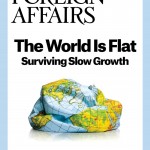In the years since the global financial crisis of 2008 engulfed the world and the United States fell into the Great Recession, the panic has subsided and Western economies have recovered to varying degrees. But the downturn’s effects have proved profound and lasting, and serious risks persist for the global economy. The recovery has been slow, inflation levels remain below the targets set by central banks, and total debt levels are much higher than before the crisis began.
Worst of all, at least two dozen countries—some with developed economies, others with emerging markets—find themselves either at or very close to the so-called zero lower bound, meaning that their short-term nominal interest rates hover around zero. At the zero lower bound, central banks struggle to stimulate growth, since the simplest way for them to do so—dropping interest rates even further—becomes nearly impossible when rates are already (almost) as low as they can go. The U.S. Federal Reserve has recently begun to raise interest rates because the American economy has sufficiently improved, a step that has moved the United States slightly away from the zero lower bound. But Japan, the countries of the eurozone, and many others are still stuck with weak economies and interest rates at or close to zero.
This article was originally published by Foreign Affairs. You can read the rest of the article here.
You can read exclusive content from Gateway House: Indian Council on Global Relations, here.
Copyright © 2016 by the Council on Foreign Relations, Inc.


